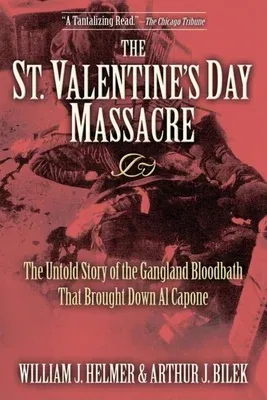A Case of Bad Timing and Poor Judgment
The machine-gun murders of seven men on the morning of February 14,
1929, by killers dressed as cops became the gangland "crime of the
century." Or so the story went. Since then it has been featured in
countless histories, biographies, movies, and television specials. The
St. Valentine's Day Massacre, however, is the first book-length
treatment of the subject. Challenging the commonly held assumption that
Al Capone ordered the wholesale slayings to gain supremacy in the
Chicago underworld, authors William J. Helmer and Arthur J. Bilek assert
the crime was a case of bad timing and poor judgment by a secret crew
from St. Louis known to Capone's mostly Italian mob as the "American
boys."
The target of the murder squad was indeed Bugs Moran, but the American
boys, who were dressed as policemen and arrived in two bogus police
cars, entered the garage where the massacre took place before Moran
arrived. Not knowing who Moran was or what he looked like, the
counterfeit cops stupidly killed everyone to make sure they got their
man.
Based on a careful review of reliable evidence, a critical reading of
news accounts of the time, a 1935 manuscript written by the widow of one
of the gunmen, and a lookout's long-suppressed confession, The St.
Valentine's Day Massacre is a fresh new look at the crime that
captured the nation's imagination. In the end, the machine-gun bullets
heard 'round the world marked the beginning of the end for Al Capone.

